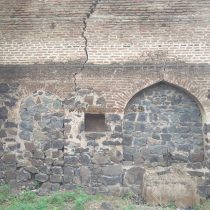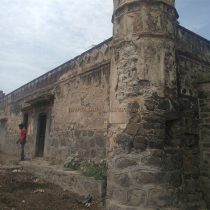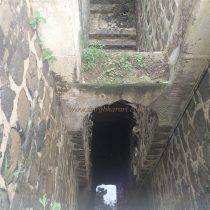GANDHALI
TYPE : NAGARKOT
DISTRICT : JALGAON
Maharashtra has been blessed with such a rich heritage of forts that even today many forts are not recorded in government offices or in the list of fort lovers. One of these forts in Gandhali village which has no documentation is Gandhali. A researcher friend of mine Shri. Jagdish Dhanmeher told about this fort and our steps turned there. This fort around Gandhali village is still silent about the history with bastions and other ruins on it. Gandhali village known as Gandhali-Piloda is located in this Fort. This village in Anmalner taluka of Jalgaon district is only at a distance of 9 km from Anmalner city. The village, which has an area of about 25 acres in the south-east, is surrounded by a rectangular-shaped fort, and this fort has two entrances built in two bastions, one facing east and one facing west.
...
One has to take the help of the locals to see the remains of Fort scattered in different areas. The ignorance of the local people about this fort is causing the decline of this fort. As the villagers do not know the difference between the words 'fort' and ‘bastion', they refer to the remains of bastions, gates and ramparts at seven places in the village as seven forts. But actually we can see a total of 10 bastions in the ramparts of this fort, 2 each next to the two gates and 6 elsewhere. There is a three-arched well with staircase in front of the village bus stand. Some of the steps of this well have been destroyed and the villagers say that this well was built by Punyashlok Ahilyabai Holkar. After seeing the well, one should take a local man with him and start exploring the fort. At the beginning of the path, we can see the south-east bastion of the fort and some of the remaining ramparts at its base. In the further part of the path, on the hill on the right, there is a repaired wada (big mansion) of Bavaskar Patil and the western wall of this wada is about 25 feet high. After turning left and going straight along this path, the south-west end bastion of the fort can be seen. There are no ramparts left here. After seeing this bastion, head towards the eastern door of the Fort. On the way we come across a small wada with two bastions. Crossing the wada we reach the door of Fort. The arch and inner part of this door built in two bastions are still there and only the upper part of the arch has collapsed. On the inner side of the door there is a porch and a staircase leading to the bastion. The ramparts from the gate to the north-east bastion of the Fort still remain today. Going round the outer side of this rampart we reach the north-east bastion. The bastion today stands only 6 feet tall. Further along this path we reach a completely ruined gate in the ramparts. After seeing this door, a Jain temple structure with 4 bastions and ramparts can be seen on the right side. The remains of a large building and wall are still standing outside this temple but the villagers know nothing about this structure. After entering the Jain temple through the walled gate, the ruins of a ruined Jain temple can be seen on a square foundation in front. There is a warehouse and a basement under here. The outer side of the basement has a staircase to enter and the upper side of this basement opens into the temple. There is a circular path around the temple inside the fort and there are two wells on this path. After visiting the Jain temple, head towards the west gate of Fort. The western gate of the fort has been completely destroyed and only the two adjacent bastions remain. In front of this door is a small temple of Maruti. After seeing this door, go to Datta Mandir in the village. Two tombs can be seen in the premises of this temple. Coming to the right side of the temple, one can see some remaining ramparts and a bastion on the western side of the Fort. A deep well and a water tank built in lime can be seen in front of this bastion. A Shiva temple can be seen on the way outside the village towards the bus stand. The stones of the rampart of the fort have been used by the villagers to build their houses and in some places this rampart has been used as the wall of the house. An hour and a half is enough to tour the entire fort.
© Suresh Nimbalkar












